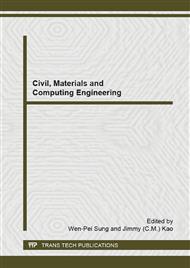p.498
p.502
p.506
p.510
p.515
p.522
p.528
p.535
p.539
Spectral Characteristics of Heart Rate Variability in Noise Exposure
Abstract:
Ecological studies have shown that the chronic effects of exposure to environmental noise cause annoyance. However, in the past, most studies have used questionnaires to evaluate the effects of noise pollution on psychosomatic responses. This study investigated cardiovascular activity changes in exposure to low-frequency noise at various noise intensities. The authors hypothesized that distinct noise intensities affect cardiovascular activity, which would be reflected in the spectral analysis parameters. The evaluation intensities of low frequency noises (from 20 to 200 Hz) were background noise (BN), 70-dBC, 80-dBC, and 90-dBC. The electrocardiographic (ECG) data was recorded for 5 minutes under various noise levels. The cardiovascular responses were evaluated using spectral analysis of the beat-to-beat (RR) intervals obtained from ECG signals. The results showed that the average blood pressure and mean RR interval variability did not substantially change relative to the noise levels. However, the low-frequency (LF) power and the ratio of LF power to high-frequency power (LF/HF) from ECG under the BN condition were significantly lower than the 80-dBC, and 90-dBC noise levels. In addition, the normalized LF of the background noise condition was significantly lower than the low-frequency of the noise levels at various intensities. In conclusion, the frequency-domain-based measures appear to be a powerful tool for exposure to low-frequency noise, even in short-term heart rate variability time series.
Info:
Periodical:
Pages:
515-521
Citation:
Online since:
December 2014
Authors:
Price:
Сopyright:
© 2015 Trans Tech Publications Ltd. All Rights Reserved
Share:
Citation:


